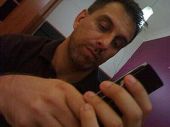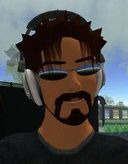From the beginning of this course I stated that my intention was to explore how we can use the MOOC model and principles to engender the “large-scale and rapid social transformations I believe we need in this time of change, challenge and crisis.” (I’m not so much interested in the content of #PLENK2010 – PLEs & PLNs – as I am in the process.)
Dave Cormier’s video of a draft presentation touches upon this idea.
In the video Dave talks about how the MOOC model can be used to leverage the social web for:
1) Effective collaboration
2) Network creation
3) As a platform to learn how to use social media effectively
This takes the MOOC model well beyond a course for learning and speaks to what I’m interested in doing with it.
I would like to add the following possibilities to the list:
4) Community-building
5) Peer support and learning
6) Crowd-sourcing solutions
I’m sure there are many more.
So what interests me is whether the MOOC model be used to create an issue- or topic-based open network?
But what about the name?
An issue that has always bothered me about terms such as PLE & PLN is that they don’t seem relevant to the average user of social media. These people are using what we in educator-land call PLEs and PLNs all the time but they don’t call them that.
Of course social media users on the web are learning, but they are also creating and sharing and networking and a whole bunch of other things (in fact learners are doing this with their PLEs and PLNs too!). They don’t single out “learning” as the focus of what they do, yet lifelong & lifewide learning is embedded in what they do.
Are these terms self-marginalising? Do they limit the concept to the education sector only?
This takes us back to the term “MOOC” which, after all, stands for Massive Online Open Course.
If the goal is to extend the MOOC model beyond a strict learning or education focus then shouldn’t we come up with another name for it? Wouldn’t calling it a “course” hold it back from its full potential?
Suggestions?
What about Massive Open Online Network?
Or Massive Online Network, since it’s only open in relation to historically closed courses anyway?
Or what about Massive Network, since the “online” is a given and therefore superfluous?
What about just Network, as they can small or large, depending on need?
Does it really even need a name?








